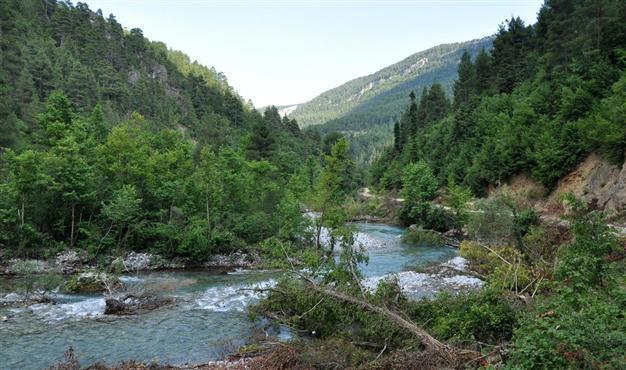Ministry forbids hydroelectric plants on protected areas housing rare species
ISTANBUL

DHA Photo
Hydroelectric power plant (HES) projects threatening rare biological life on natural protected areas will not be permitted, but other protected areas are “open” for construction, according to an Environment Ministry resolution.The resolution will likely set a precedent for dozens of legal disputes over the growing number of HES projects.
As a result of an ecological-based scientific report, HES projects planned on natural protected areas that house nationally or internationally rare ecosystems and species; have an authentic ecosystem structure; maintain the integrity of natural spaces or shelter critical species in the food chain will be disallowed, in accordance with the resolution released on the Official Gazette on Aug. 12.
Protected areas that house living, feeding and reproducing areas or migrating paths of narrowly distributed rare species or endangered endemic species will also be preserved from HES construction, the report says.
However, HES projects on natural protected areas that do not feature any of these criteria will be permitted on the condition of considering agricultural irrigation needs and guaranteeing the continuation of biological diversity.
Dozens of HES projects are ongoing across the country, particularly in leafy Black Sea provinces that house hundreds of streams in forested lands, despite strong opposition from locals and environmentalists, who accuse the energy firms of jeopardizing the environment in cooperation with the government.
Many projects are also decried for being carried on despite insufficient Environmental Impact Assessment (ÇED) reports and experts pointing out their shortcomings. The ministry’s resolution will be used as a base in the assessment of hundreds of applications collected by regional commissions against HES constructions on forestry or culturally important areas.
















